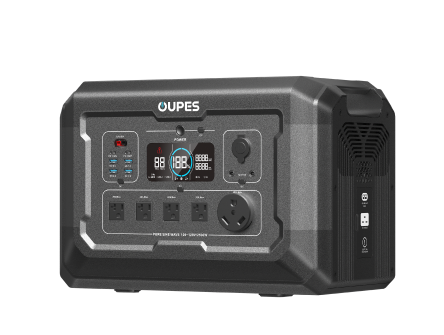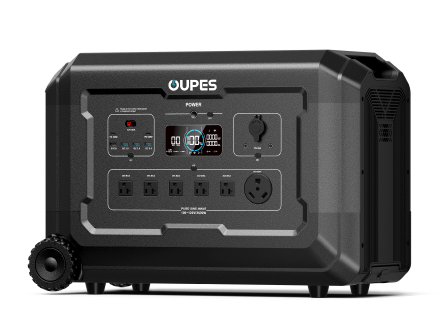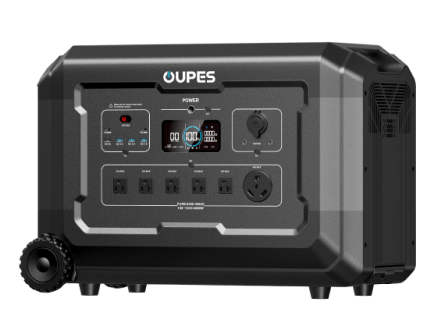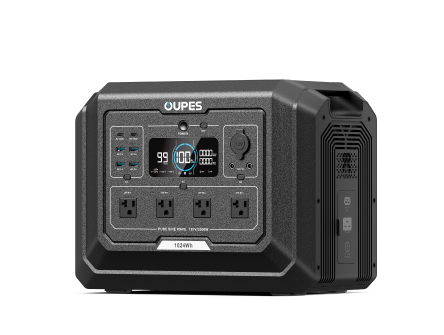
With hurricane season on the horizon, your home’s resilience is your best defense. More than just boarding windows and buying water, true preparedness ensures safety, continuity, and peace of mind. This guide walks you through every critical step to ready your home—leveraging structural reinforcement, emergency planning, utilities protection, and reliable backup power like solar generators from OUPES—to weather the storm with confidence.
Whether you're a seasoned homeowner or updating your emergency strategy, understanding how to fortify your property and household routines can make all the difference when a storm strikes.
Securing and Reinforcing the Physical Structure of Your Home
Ensuring your home can withstand high winds and debris impact begins with structural reinforcements. Start by inspecting your roof: replace missing or loose shingles, reinforce roof-to-wall connections, and install hurricane straps or clips to anchor the roof frame. A hip roof is naturally more wind-resistant than a gable roof, but straps and bracing can significantly strengthen any roof type.
Next, focus on windows and doors. Install impact-rated glass or durable storm shutters. If shutters aren’t feasible, reinforce entry and garage doors with wind-resistant hardware and strong frames. Modern homes benefit from reinforced garage doors specifically designed for wind loads, helping prevent pressurization and catastrophic structural failure during a storm.
Seal exterior openings like soffits, vents, and overhangs to prevent water intrusion and uplift damage. A small opening can create pressure imbalances and allow wind-driven water to damage interior surfaces. Also clear gutters and downspouts—clogged drains contribute to water buildup and roof leaks, especially in heavy rain.
By reinforcing your home proactively, you reduce vulnerability and may also qualify for insurance discounts under wind mitigation guidelines. These structural upgrades not only protect your family but also minimize restoration costs post-hurricane.
Creating a Comprehensive Emergency Supply and Communication Plan
Even a well-fortified home requires a robust emergency plan. Start by assembling a supply kit: enough non-perishable food and water for at least three days per person, manual tools like can openers, flashlights, extra batteries, and a battery-operated radio. Include first aid supplies customized to your family’s medical needs, and don’t forget pet food if you have animals.
Communication is key. Designate an out-of-area contact person and create written plans for where family members should meet if separated. Mobile devices can fail, so include physical maps and a contact list in your kit. When possible, equip your kit with a portable solar generator—such as an OUPES model—to power charging ports, radios, and lights without relying on fuel.
Practice evacuation drills and power-down procedures. Know how to shut off utilities (water, gas, electricity) safely before anticipated high winds or flooding. Store fuel for vehicles, review evacuation routes, and identify shelters carefully—especially those that accommodate pets or medical conditions.
This level of planning minimizes panic during a hurricane event and ensures that you’re taking informed, calm actions rather than reacting blindly when the storm hits.
Protecting Utilities and Valuables from Water and Wind Damage
Flooding and wind pose separate but overlapping risks to homeowners. Elevate critical utilities—HVAC units, water heaters, electrical panels—to above expected flood levels. Installing flood vents in crawlspaces also helps reduce structural pressure buildup during high water events.
Store valuables in waterproof containers off the floor—important documents, electronics, family heirlooms, and insurance information. Use water-resistant safes or file boxes placed on shelving racks that remain dry. Personal photo albums or digital backups should also be considered.
Landscape strategically: trim tree branches that overhang your roof or power lines, and move patio furniture, potted plants, and equipment indoors before high winds arrive. Secure loose objects around your property—they become dangerous projectiles in gusts above 60 mph.
Before the storm, disconnect lawn irrigation systems and anchor or fill pools to reduce buoyancy. Simple yard preparation significantly reduces both wind and water damage risks—not just to structures, but to occupant safety.
Ensuring Reliable Backup Power During and After a Storm
As storms often cause power outages, backup power becomes a necessity, not a luxury. Solar generators—like those from OUPES—offer clean, quiet, and durable solutions. Unlike gas generators, they require no fuel and are safe to operate indoors, making them an ideal complement to structural preparedness.
Choose a unit with sufficient capacity to run essential items like LED lighting, communication devices, medical equipment, and perhaps a small refrigerator. Larger systems or expandable battery models can support HVAC systems or sump pumps if needed. Pair your generator with portable solar panels to recharge during daylight hours even if the grid remains down.
Keep your unit charged before storms hit and test performance periodically—especially before hurricane season starts. A full-charge protocol and a well-defined charging routine help ensure that your generator functions reliably when you need it most.
A well-integrated system of backup power dramatically reduces risk and increases peace of mind—allowing you to stay informed, keep food cold, and maintain critical home functions during extended outages.
Maintenance, Review, and Insurance Integration After the Storm
Preparation doesn’t end once the storm passes. After the storm, conduct a full inspection: check roof, siding, windows, and utilities for damage. Replace or repair any compromised components immediately. Keep receipts and photos, as they support insurance claims and potential wind mitigation inspections during renewal.
Update your emergency kit and supplies—rotate food and water, replace expired items, and restock batteries. Test your solar generator again and clean solar panels if needed. Review your family communication plan and adjust contact information, shelter locations, or evacuation routes if any have changed.
Contact your insurance provider early to report any damage and start claims procedures. Document losses comprehensively, including photographic evidence and repair estimates. If you made upgrades—like roof reinforcements or solar generator installations—these can help in negotiating lower premiums at renewal.
Finally, review your hurricane preparedness plan annually—just before the season—with your household members. Practice the physical setup, test tools and systems, and update supplies. Flood risks and infrastructure changes evolve over time, so staying current is essential for continuous readiness.
Conclusion
Preparing your home for a hurricane involves more than taping windows or stocking up on supplies. It requires thoughtful planning, structural care, emergency systems, and reliable backup power. By bolstering your home against wind and water damage, creating a cohesive emergency strategy, and incorporating trusted solar power solutions like OUPES generators, you can turn vulnerability into resilience.
When every aspect of your home—from the roof to the generator—is optimized for storm survival, you gain not just protection but peace of mind. Take proactive steps now, and you’ll be ready when the next storm approaches.




























